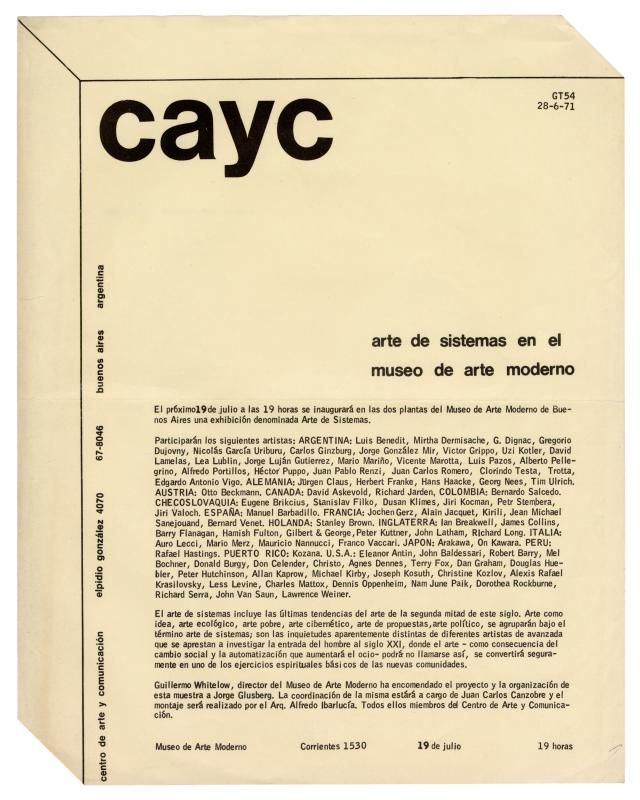Ever since it was founded, the CAYC (Centro de Arte y Comunicación), helmed by the cultural promoter, artist, and businessman Jorge Glusberg, was intended as an interdisciplinary space where an experimental art movement could flourish. The establishment of collaborative networks connecting local and international artists and critics played an important role in this process. The exhibitions shone a light on these exchanges, in which overviews of trends or individual artists provided an introduction to the innovations of international contemporary art and made Argentine and Latin American artists better known on the global scene.
Barry Flanagan (1941–2009) studied architecture at the Birmingham College of Art and Crafts. Later, in London, he studied sculpture at Saint Martin’s School of Art from 1964 to 1966, at the same time as Gilbert & George and Argentinean David Lamelas. In the late 1960s and early 1970s he sought to distance himself from what he had learned there by trying his hand at installation, video, dance, and painting. The experimental aspect of his works relied on nontraditional, or “anti-artistic,” materials, such as sand, rubble, bits of wood, sacking, light, and shadows, which were presented with almost no intervention by the artist, being merely combined in formal and word-based games that used humor and poetry.
Flanagan’s production during this period has often been compared to Process art, Arte Povera, or Anti-Form. His work was compatible with the CAYC’s interests, and he took part in the center’s activities on several occasions. Photographs of his works were presented at Dibujos y proyectos de 16 escultores británicos, the exhibition organized by the CAYC at the Bonino gallery in Buenos Aires in May 1970. Later that year, in November, the exhibition Christo y Barry Flanagan (GT-14; doc. no. pending) was presented at the CAYC. He also took part in the group exhibition Arte de Sistemas at the Museo de Arte Moderno in Buenos Aires in 1971 (GT-54; doc. no. 1476292). All of these events took place prior to the solo show announced in this newsletter, which happened in August 1976.
In the late 1970s he began producing what would become his best-known series, a project that brought him fame on the international stage: monumental bronzes featuring the stylized figure of a hare in different poses or engaged in different activities, such as dancing, playing instruments, performing tasks, or playing sports. These pieces can now be found installed in public and private spaces all over the world.

